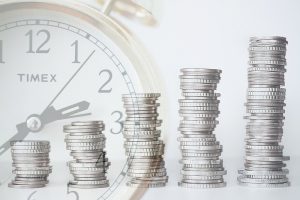Turn Market Shifts Into Opportunity With A Strategic Bond Ladder
When I sold bonds in the 1990s, using a bond ladder—or even laddering CDs—allowed investors to maximize their investment yields and retain flexibility and liquidity. With the yield curve starting to steepen and the future of interest rates unknown, employing the current version of a bond ladder strategy can add safety and income to your portfolio.
The recent changes in interest rates show how yields in the bond market are changing. On September 18, the Federal Reserve cut the Fed Funds target rate from 5.25%–5.5% by half a percent, to 4.75%–5.0%. On that date, the 10-year Treasury rate stood at 3.70%. Now, a month later, short-term rates remain down 0.50%, but the 10-year rate is up to almost 4.20%. Short-term and long-term interest rates are trending in opposite directions. I would not be surprised to see the yield curve continue to steepen.
A bond ladder involves buying bonds with staggered maturities. With a normal slope on the yield curve, the longest maturities will carry the highest yields. If you stagger maturities, say over five or seven years, you will have a bond maturing every year. To keep the ladder going you will use the cash from the matured bonds to buy higher yield bonds at your longest maturity.
However, it is not the 1990s, and buying individual bonds is not something that most investors do, or even want to do. The good news is that you can set up bond ladders with defined-maturity ETFs. These are bond funds; each fund will only own bonds that mature in the designated year. For example, the Invesco BulletShares 2026 Corporate Bond ETF (BSCQ) holds investment-grade bonds that mature in the eponymous year; at the end of that year, the funds are redeemed for cash. Each ETF will own several hundred bonds, diversifying your ladder across over 1,000 individual bonds.
Two fund families offer this type of bond fund. Invesco has its BulletShares ETFs, with funds for investment-grade corporate bonds, high-yield corporate bonds, and municipal bonds. Maturities up to 10 years are available. iShares offers a similar bond ETF series called iBonds ETFs, which include Treasury, TIPS, municipal, corporate, and high-yield bond ETFs.
These ETF groups let you put together a bond ETF ladder that meets your risk tolerance, tax situation, and outlook for interest rates. I currently recommend a six-fund ladder, 2025 to 2030, using high-yield bonds, for my Dividend Hunter subscribers.
This post originally appeared at Investors Alley.
Category: Dividend Yield





